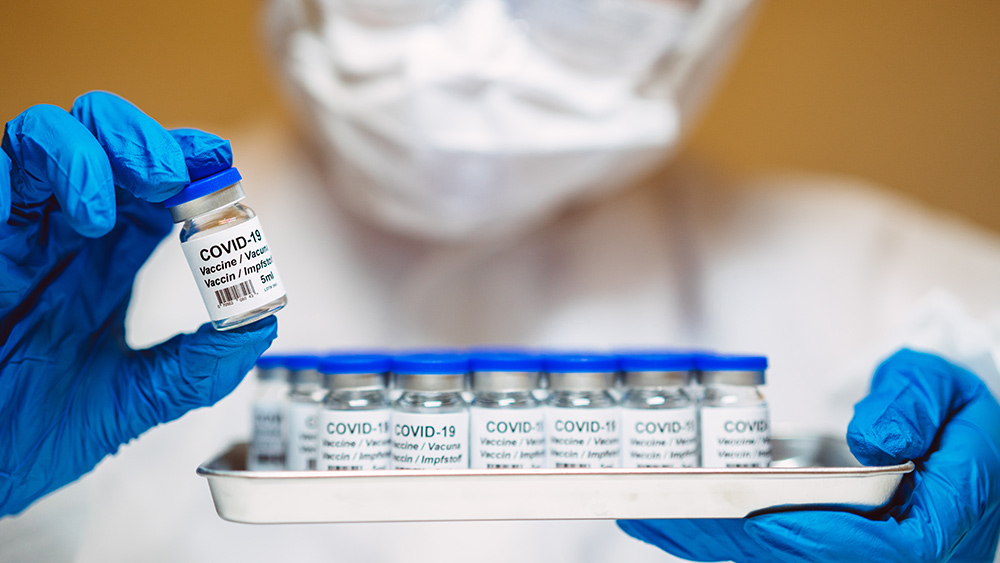How does a C-section birth affect the child? New research suggests children born this way gain more weight than those born naturally
10/27/2017 / By Jhoanna Robinson

A study that was published online on Wednesday, October 11 in the journal Science Advances has shown that infants that were born via the Cesarean section are more prone to the risks of obesity as they grow older as compared with infants that were born vaginally.
The study focuses on the microbiome, which is a group of bacterial species that resides in the human gut. These microbes underwent evolution over millions of years to aid in digestion, immunity, and metabolism; however, their activities have been interfered with by practices such as antibiotic treatment and C-section delivery in recent years – at around the same time that the rate of obesity has more than doubled.
The researchers say that there have been links between Cesarean section and the increased risk of obesity in humans. A theory postulates that the transmission of maternal microbes is interrupted by the process of C-section. (Related: Antibiotic use in infants could cause obesity, study shows.)
“Our study is the first to demonstrate a causal relationship between C-section and increased body weight in mammals. The question of whether a baby’s founding microbiome affects its future obesity risk becomes more urgent as C-sections are increasingly used by choice in many parts of the world,” lead author and microbiologist Maria Dominguez-Bello, Ph.D., who is also an associate professor in the Department of Medicine at New York University School of Medicine, says.
Breast milk is still the best for babies
Mothers sometimes give up on breastfeeding their newly-born infants because they have a low milk supply – they address this challenge by supplementing with formula. As far back as 2007, 73 percent of hospitals in the United States automatically handed out formula for free to every new mom. This practice might have increased the likelihood that moms supplemented with free formula whether they needed to or not.

The World Health Organization (WHO) and the United Nations Children’s Fund (Unicef) have planned for this eventuality by instituting the Baby-Friendly Hospital Initiative back in 1991. To be accredited, hospitals should follow the 10 Steps Followed by Baby-Friendly Hospitals, which WHO says aims “to protect, promote, and support breastfeeding in all facilities that provide maternity and newborn services.”
The guidelines require that at least 75 percent of a facility’s patients should be exclusively breastfeeding by the time that they’re discharged. As of 2017 records in the U.S., 79 percent of mothers actively make an effort to breastfeed, while 49 percent are breastfeeding at six months (19 percent exclusively), and 27 percent are breastfeeding at 12 months, according to the Centers for Disease Control and Prevention.
That is up from 42 percent (11 percent exclusively) at six months and 21 percent at 12 months in 2007. Also, as of 2013, only 31.6 percent of hospitals have handed out formula to new months – a significant decrease from 2007’s 73 percent.
However, the 10-step guideline is set to be revisited and finalized for publication in November 2017. The nonprofit organization Fed Is Best Foundation (FIBF) has raised concerns about step number six which states, “Give newborn infants no food nor drink other than breast milk unless medically indicated.”
According to the FIBF, adhering to this guideline increases the risk that newborns can starve and suffer from complications such as low blood sugar, dehydration, hypoglycemia, and jaundice – which, if left untreated, can result in brain disorders and permanent disability.
FIBF further added in a post that was published in their website during the third week of October that 10 percent of babies that are born the natural way and 25 percent of babies born by C-section at baby-friendly hospitals who are exclusively breastfed lose a significant amount of weight (more than 10 percent of their birth weight) during their first days outside the mother’s womb.
Read up on more stories such as this one at Research.news.
Sources include:
Submit a correction >>
Tagged Under:
antibiotic damage, baby nutrition, breast vs formula, breastfeeding, breastmilk, Cesarean delivery, gut health, gut microbiome, mothers, newly-born infants, nutrients, obesity, vaccines
This article may contain statements that reflect the opinion of the author





















